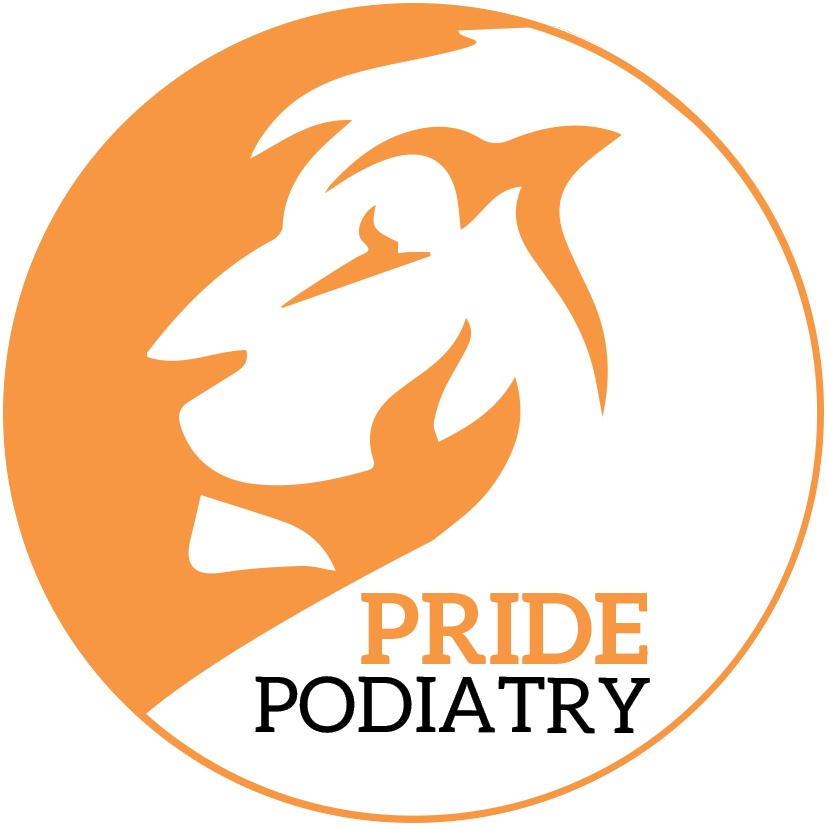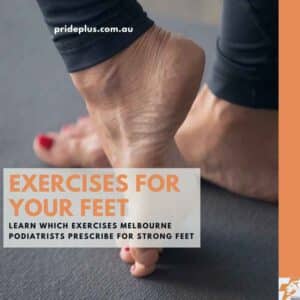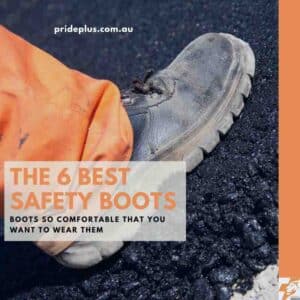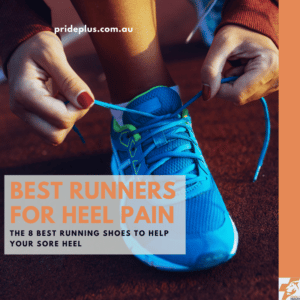OK, as a podiatrist it’s impossible not to look at newborn feet and go, ahhh… They’re so cute, interesting, and miniature!
While our infants feet certainly have a likeness to our own adult feet, there are a heap of difference under the skin.
When you think of what your adult feet go through on a daily basis, pounding around in shoes on hard floors, then contrast with your newborn’s feet, all bundled up and swaddled in your arms. There’s clearly different demands placed on a newborn foot compared with your own.
Need a podiatrist for your own sore feet?
Book in with our team online here.
There’s plenty of myths and old tales about infants feet as well. Some have a grounding in fact, others pure fiction.
Let’s go through the evidence and experience that we podiatrists apply in clinic.
The Newborn Feet vs. Mum’s Feet
| Newborn Feet | Mum’s Feet | |
| Arch | Flatter, less defined | Mostly defined, variety in heights |
| Fatty padding | Lots | Reduced, spread to only the ball of the foot and the heel |
| Nails | Clear, softer | Thicker, firmer and less clear |
| Skin | Soft, stretchy and supply | Firmer, likely hard callus on weight bearing areas |
| Bone Count | 26 | 28 |
| Average joint range of motion | Large range | Varies but reduced |
| End joint range of motion feel | Soft and stretchy | Firm and clearly defined |
| Legs (not strictly the foot) | Bow legged (genu varum) | Knee’s straighter, slight outward turn (lots of variation here) |
As you can see from the above table, your newborn’s foot has plenty of differences from Mum’s (or Dad’s) feet.
Not only are there less bones, bones themselves are much softer and cartilaginous. The connective tissues are much more elastic and stretchy too.
Then there’s the muscles, as an adult the muscles within your lower leg (the calf) and your foot have to be incredibly strong and developed to carry us around.
Contrast that with your newborn and there’s no need to carry any weight on their feet initially. Seeing as there are clear differences between an adult and a newborn’s feet, there are some conditions that first present at infancy or only effect a babies foot.
Common Newborn Feet Abnormalities
Alright, there’s a huge variation in the category of “normal” infant feet. And there’s entire industries set up around scaring new parents into thinking something is wrong with your child and you must act now to make it right.
That being said, there are a few conditions that present in newborns feet which can be picked up early on and treated.
Metatarsus Adductus
Is where an infants foot has much more of a curved shape when looking at the sole. The metatarsal bones (the long bones in the foot that sit before the toes) are all angled in towards the medial (inside or big toe side) of the foot.
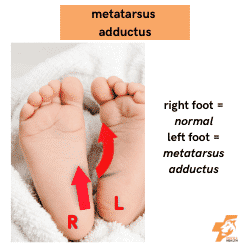
It’s quite common and around 2 babies out of every 1000 have this condition.
There are flexible and rigid cases as well as a range of curvature. It can be a condition that your newborn grows out of (if more mild and flexible) but also could require intervention. These can involve stretching exercises, massage and bracing or splinting interventions.
Club Foot
Also known as talipes equinovarus, club foot is a developmental condition. There are genetic factors as well as intrauterine positioning factors.
With clubfoot, your infant’s feet will appear more turned in and the arch will look more defined when it is expected to be quite flat at that age.
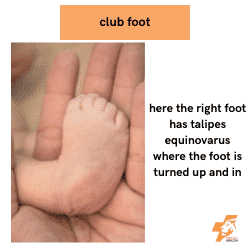
There’s a range of severity with a club foot too, some newborns require specialised management including regular casting and splinting for months to encourage more normal development. There can also be surgical interventions as a child’s skeleton matures which can be used to treat club foot deformity and align bones in their correct position.
Polydactyly
This abnormality is pretty easy to spot, it’s extra toes. Around 1 in 1000 newborn babies are born with more than 10 toes. This is a surprisingly common condition!
Most cases are treated surgically at a young age for improved cosmesis and shoe fit leading into teenage and adult years. A family history of polydactyly is usually present.
Overlapping Toes
This abnormality effects babies toes, and usually the 5th (little) toe. The toe sits up and over rides the 4th although it can happen to any toe.
With growth, weight bearing and development it will often reduce and self correct. There’s a small amount of evidence for massage and toe spacer or separators to assist this.
If the deformity becomes fixed and rigid then surgery is an option in later years.
Curly Toes
Incredibly common due to intrauterine placement, your babies toes (often 3-4-5) curl towards the big toe.
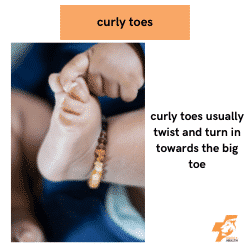
Similar to overlapping toes curly toes will usually develop into their correct position with development and weightbearing.
Ingrowing Toenails
Similar to us adults ingrown toenails can be a painful condition for our newborn’s toes. Often caused by tight fitting clothing an inflamed, red edge on the side of the toe is your tell tale sign.
Avoiding or treating an infection with topical antiseptics like betadine liquid is important. Removing the offending nail edge from the skin will also need to be completed.
White Spots On Babies Toenails
Pale white spots on an infants toenails can be a sign of superficial skin flora growth. Pathogens of the yeast and fungal families can lead to toenail discoloration.
Mild white spots can often be filed off (gently) and prevented from spreading with various safe topical antifungal agents including natural tea tree oil.
Newborn Feet – Frequently Asked Questions
Does My Child Need Podiatry or Medical Attention?
In Australia all infants are screened early by maternal child health nurses who would usually pick up on some of the more severe abnormalities.
Also, many of the abnormalities we’ve touched on above are self resolving as our babies grow and develop.
If you’re concerned then seeing a podiatrist to get your child’s feet checked is a reasonable starting point for many. Us podiatrists will often work closely with a local paediatrician if there is a need to escalate for further medical or surgical management.
Delayed walking (usually our infants start to walk around 12 months) can be a sign of developmental issues which your podiatrist can advise on.
Foot and ankle pain, redness or newly developed lumps are also good triggers to see a podiatrist for assessment.
How Does Podiatry Help With Newborn Feet?
Podiatrists are diagnosis fiends. We’re one of the few professions outside of the medical world (we’re proud to be part of the allied health team) who are recognised for our ability to diagnose.
From a diagnosis podiatrists can then prescribe interventions such as stretching exercises, massage, play, footwear and orthotics (insoles) or bracing. We’ll often work along side fellow allied health professions like EPs and physiotherapists when further gross motor skill development is needed.
What Can I Do At Home?
Encouraging physical activity at every stage of your infants development. Curious play, being barefoot (when safe to do so) on different surfaces will encourage fast bone, muscle and coordination development.
What Shoes Should My Newborn Wear?
Ideally none! Being barefoot or in the most flexible minimalist style of shoe will encourage growth and development.
As our kids grow and become more independent explorers on their own two feet the shoe needs can start to change. While growing we still want to go for flexible but protective soles, we might have periods of time where the softer bones and growth plates get overworked and sore. This is usually when a more stiff soled “adult” style of shoe can come in handy.
My Infant Has Flat Feet, Do They Need Orthotics?
Ok, big topic here. Let’s whip through the basics. Orthotics are insoles or arch supports that push on the foot, usually if there is not enough strength from our muscles to pull on our feet.
As infants have flat feet, and not yet developed muscles for weight bearing there is no need for orthotics under foot almost 100% of the time. We also know that using an orthotic as an infant or young child will not reduce or prevent having a flat foot later in life.
That being said, if your child is walking, complaining of sore feet than an orthotic can be a great temporary way to reduce the load and pain on specific areas of the foot.
We’ve written an entire post on the topic of orthotics for children which you can read about here.
If you’re in need of a podiatrist for your newborn’s feet you can book in with our team at any of our clinics across Melbourne.
